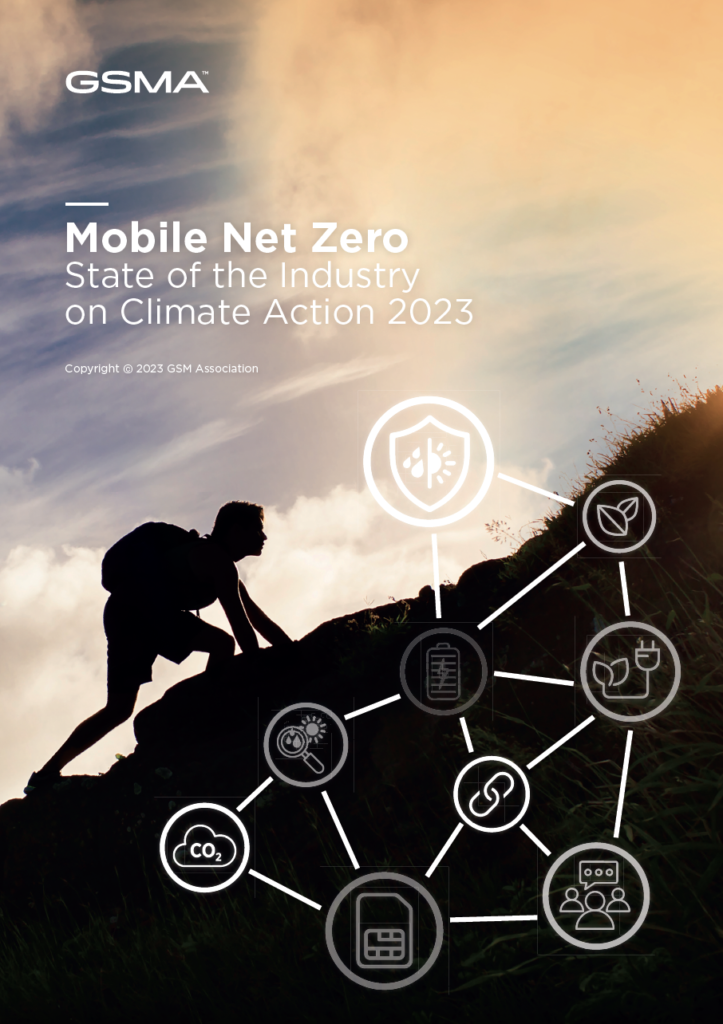Back in 2019, the GSMA set an ambition on behalf of the mobile industry: to be net zero by 2050. This was a bold step pre-dating any G7 economy commitment to net zero. This ambitious goal aimed to harness the momentum of progressive mobile network operators worldwide, laying the foundations for a sustainable future.
A Global Stocktake
This year all countries will come together at COP28 for a global stocktake on progress towards their nationally determined contributions – the public carbon reduction targets they have set. But what is the global stocktake of the mobile industry? How are we doing against our net zero ambition?
Since 2020, the GSMA has published an annual assessment to try and answer these questions in the ‘Mobile Net Zero’ report. The latest edition was published in March and has the most data analysis to date including, for the first time, regional data cuts. Let’s look behind the headlines.

A Wave of Commitments
The number of mobile network operators aligning themselves with the trajectory to be net zero by 2050 has seen a significant jump. With 62 operators onboard in 2023 (up from 50 in 2022), this now accounts for an impressive 63% of global mobile network industry revenue and 49% by connections. The industry is rallying together for change.
Revenue vs Connections: understanding impact
Why does the GSMA report both revenue and connections? Revenue comparisons enable us to gauge our progress against other sectors, as detailed in this Race to Zero report. On the other hand, focusing on connections aligns closely with the industry’s carbon emissions. Approximately 50% of connections should equate to around 50% of the industry’s carbon footprint.
A Significant Step Forward
While these company targets may not yet cover the entire industry, they represent a significant step forward for several reasons. Firstly, these high-profile public commitments are entirely voluntary and reported annually – showcasing the dedication of mobile network operators.
Secondly, they are worthy of praise because the targets are challenging. Customer demand for data means traffic across networks is increasing each year. And at the same time, operators are being asked to reduce their electricity use – effectively to move more data using less electricity. And increasingly that electricity needs to be green, despite it not being possible to purchase renewable electricity in many countries.
The third reason these targets are noteworthy is because they cover more than just the company’s direct emissions, they cover indirect emissions from their supply chains as well. This means these companies have committed to targets for emission sources over which they have no control.
Measuring Progress
So, it is reasonable to say there has been good progress on target-setting, but what about progress towards them? Are emissions coming down? Whilst the GSMA is collecting information from our members, we have found this surprisingly difficult to measure because it means measuring both direct and indirect emissions.
Direct emissions are from electricity use in networks and buildings, and fuel use in fleets and generators for network power. This is reasonably straightforward to collect data on and many operators report on this each year. There are some challenges around the boundaries of what to include (e.g. how to include an outsourced masts business) and the accuracy of data collection. Still, these are generally easy problems to address.
Encouraging Signs: Renewables on the rise
Analysing data on direct emissions reveals encouraging initial indications. The percentage of directly purchased renewable electricity rose from an average of 14% in 2020 to 18% in 2021 and a promising 24% in 2022. Notably, this figure excludes renewable electricity already present in a country’s grid mix, and it’s worth highlighting that in Europe the number reached over 80% last year. However, the industry must accelerate these positive changes to meet the ambitious 2030 Breakthrough target of 70% renewable electricity globally.
While renewable electricity adoption is pressing ahead, we must remain vigilant as overall electricity usage continues to rise, albeit slowly. This can be attributed to network coverage expansion, the rollout of 5G technology, the delayed retirement of older networks, and the mushrooming demand for data. Balancing growth and energy efficiency is crucial to achieving net zero.
Indirect Emissions: The elusive challenge
Focusing on the indirect emissions of mobile networks, these are much more difficult to measure because they include all value chain emissions: both supply chain emissions and those resulting from customers using connected products and services. To help our members measure these more easily and consistently, the GSMA partnered with the ITU (International Telecommunication Union) and GeSI (Global Enabling Sustainability Initiative) to create guidance for each of the 15 Scope 3 Categories, which will be published in June.
The guidance will help measurement in the years to come, and so help identify which areas of emissions should be a focus. Early indications are that there will need to be action with a broad range of suppliers. A significant chunk of emissions arise from the purchase of mobile devices and network equipment, so it is in the interest of network operators to work with those vendors to help drive down emissions.
In the forthcoming edition of the Mobile Net Zero report, slated for early 2024, the GSMA is planning a deeper analysis of Scope 1, 2, and 3 data to provide more comprehensive insights into our progress. In the meantime, enhanced data sharing on emissions among operators, suppliers, and customers will boost accuracy and propel us closer to achieving net zero. Together, let’s continue the journey towards a more sustainable future!